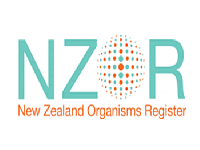Regional Research Update Issue 2

The renewed focus on regional development creates opportunities for our land, environment, biodiversity and biosecurity work to be applied in your region. Much of our research is necessarily about “place” and most of it can be translated from that place to your place.
In this edition you will find short articles on
- Big wins for biodiversity, biosecurity and erosion management
- Crazy and Ambitious (BioHeritage National Science Challenge symposium)
- The race against myrtle rust
- Kiwi, People and Dogs
- S-Map: 8 million hectares now mapped.
- Water + Soil (Next Generation S-Map)
- Climate Resilient Māori Land
- NZOR – What’s in a name?
- Sharing Riparian Planning Data
- Assessing Economic, Environmental, and Social Vulnerability in Regional New Zealand
- Recent EnviroLink Projects
Please get in touch if you’d like to contribute articles or tell us how our work together is making a difference in your area.
Peter Millard
General Manager
Manaaki Whenua Landcare Research
In this issue

Big wins for biodiversity biosecurity and erosion management
We are delighted to let you know about three exciting new research programmes to be funded through the MBIE Endeavour Fund. Each of these five year programmes will make a real difference to New Zealand, through increasing biodiversity, strengthening biosecurity and improving erosion management.

Crazy and Ambitious 2
The Biological Heritage National Science Challenge symposium returns in 2019

The race against myrtle rust
New research, “Beyond Myrtle Rust, towards ecosystem resilience” will focus on boosting ecosystem resilience by running ground-level interference of myrtle rust.

Dogs, people and kiwi
Kiwi smell delicious to dogs and people don’t realise just how enticing this can be

S-Map: 8 million hectares now mapped
S-Map on Line now delivers digital mapping of over 8 million hectares of NZ soils, equivalent to 33% of NZ’s area. While we continue with significant new mapping projects the coverage of NZ’s productive lowlands with multiple use potential is now at around two thirds coverage.

Water + Soil: Next Generation S-Map
Manaaki Whenua is leading a 5 year research programme to improve our understanding of key soil characteristics such as water and nutrient transport and include this data in S-Map. This information is critical for water quality and soil management.

Climate-resilient Māori land
To help landowners reduce the risks of increased erosion under climate change, and to maximise their revenue, this project used kaupapa Māori, biophysical and economic assessment tools to understand and evaluate different land-use decisions within a range of potential climate change scenarios.

NZOR – What’s in a name?
Scientific names are the index to all biological information. They provide the essential entry point for accessing and sharing information about our living world. BUT even scientific names are a poor index because they are complex and may change as our knowledge of the biological world improves.

Sharing Riparian Planning Data
Data sharing will help farmers to deliver one set of information about the management of their riparian zones for multiple purposes.

Assessing economic, environmental, and social vulnerability in regional New Zealand
Environmental issues and policies are often treated in isolation from local economic and social factors, which can influence a community’s ability to respond to environmental stressors and natural hazards. The new Economic Social Vulnerability Index (ESVI) is a spatially explicit tool for representing economic and social vulnerability in a straightforward index, designed to be relevant for environmental considerations.

Recent EnviroLink projects
Here’s a sampler of what we’ve been doing for regional councils through the EnviroLink system; a great demonstration of the breadth of our work – look below for dung beetles, pest mammals, plantation forests, soils data, restoration, ecology, and systems thinking
